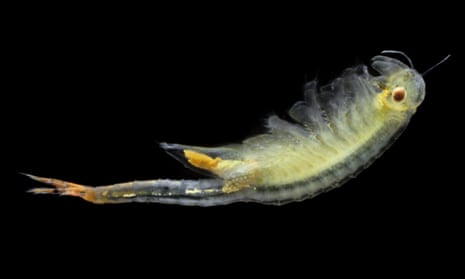The fairy shrimp, Chirocephalus diaphanus, lives a precarious existence, sometimes waiting years for rain to come along so that dormant eggs can hatch.
In a seasonal pond, or even in a puddle in a tractor rut, fairy shrimps race to grow to maturity, mate and lay eggs before their habitat dries out again.
They are translucent creatures, with black eyes and reddened tips to their antennae and abdomen. They swim on their backs eating organic matter and algae floating in the water, growing to 3cm long, although they mature earlier if drought threatens.
The eggs then lie in the dust waiting for favourable conditions to occur again, but they do not all hatch at once, in case the next drought comes too soon and the population is wiped out.
Each batch contains some “sleepers” – eggs that wait for two or three wet periods to pass before trying their luck at reaching maturity. The fossil record shows they have been around for 140m years, so theirs is clearly a successful strategy, though they are aided by the fact that no fish or other predators can survive in their chosen habitat.
Their range is from the north of England to the Mediterranean, and the shrimps are classed as a threatened species, mainly because of human destruction of their habitat.
